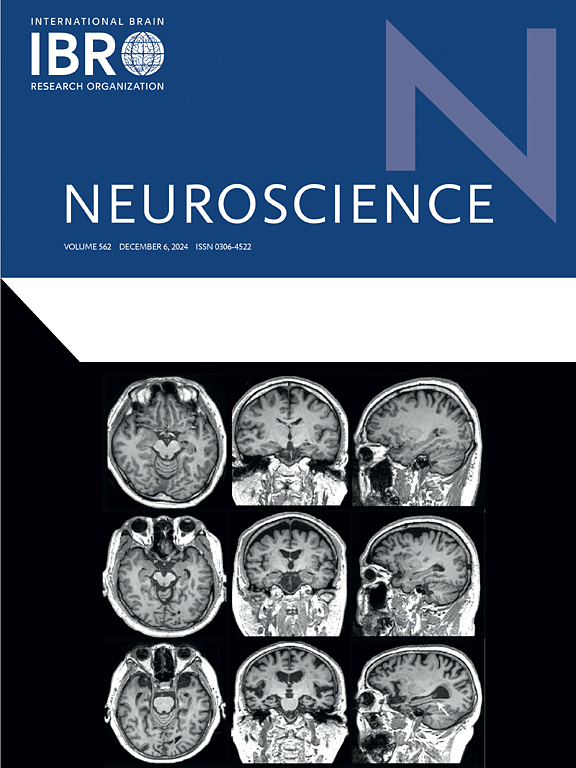血清白蛋白和总胆红素与急性缺血性卒中患者的不良预后相关
IF 2.8
3区 医学
Q2 NEUROSCIENCES
引用次数: 0
摘要
背景很少有研究探讨急性缺血性脑卒中(AIS)患者血清肝功能指标与临床预后的相关性。方法回顾性分析2020年1月至2023年3月的AIS患者。临床结果包括入院时脑卒中严重程度,出院和3个月时预后较差。使用多变量logistic回归来评估肝功能指标与风险和不良结局的关系。采用亚组分析探讨肝功能指标与临床转归的关系。通过受试者工作特征(ROC)曲线评估这些指标对不良结局的预测价值。结果共纳入AIS患者2022例。在调整混杂因素后,较低的白蛋白水平与入院时较高的NIHSS评分(OR = 0.924, 95% CI: 0.901-0.947)和出院时较差的功能结局(OR = 0.950, 95% CI: 0.920-0.981)和3个月时(OR = 0.913, 95% CI: 0.878-0.950)相关。同样,较高的总胆红素水平也与较高的基线NIHSS评分(OR = 1.038, 95% CI: 1.022-1.055)和出院时(OR = 1.021, 95% CI: 1.001-1.042)和3个月时(OR = 1.029, 95% CI: 1.004-1.054)的功能不良相关。AIS患者3个月预后不良的风险随着入院时白蛋白水平的降低而增加,与年龄、性别和卒中史无关(p <;0.05)。结论AIS患者入院时ALB降低、总胆红素升高与NIHSS评分升高、出院及3个月时预后差有关。本文章由计算机程序翻译,如有差异,请以英文原文为准。
Serum albumin and total bilirubin are associated with poor outcomes in patients with acute ischemic stroke
Background
Few studies have investigated the correlation between serum liver function indices and clinical outcomes in acute ischemic stroke (AIS) patients.
Methods
Patients with AIS from January 2020 to March 2023 were retrospectively analyzed. The clinical outcomes included stroke severity at admission and poor prognosis at discharge and 3 months. Multivariate logistic regression was used to evaluate the associations of liver function indicators with risk and adverse outcomes. Subgroup analysis was conducted to explore the relationships between liver function indices and clinical outcomes. The predictive value of these indices for adverse outcomes was assessed via receiver operating characteristic (ROC) curves.
Results
A total of 2022 AIS patients were included in this study. After adjustment for confounding factors, lower albumin levels were associated with higher NIHSS scores at admission (OR = 0.924, 95 % CI: 0.901–0.947) and poor functional outcomes at discharge (OR = 0.950, 95 % CI: 0.920–0.981) and at 3 months (OR = 0.913, 95 % CI: 0.878–0.950). Similarly, higher total bilirubin levels were also correlated with higher baseline NIHSS scores (OR = 1.038, 95 % CI: 1.022–1.055) and poor functional outcomes at discharge (OR = 1.021, 95 % CI: 1.001–1.042) and at 3 months (OR = 1.029, 95 % CI: 1.004–1.054). The risk of a poor 3-month prognosis in AIS patients increased with decreasing albumin levels at admission, independent of age, sex, and history of stroke (p < 0.05).
Conclusions
Decreased ALB and increased total bilirubin levels were associated with increased NIHSS scores at admission and poor prognosis at discharge and 3 months in AIS patients.
求助全文
通过发布文献求助,成功后即可免费获取论文全文。
去求助
来源期刊

Neuroscience
医学-神经科学
CiteScore
6.20
自引率
0.00%
发文量
394
审稿时长
52 days
期刊介绍:
Neuroscience publishes papers describing the results of original research on any aspect of the scientific study of the nervous system. Any paper, however short, will be considered for publication provided that it reports significant, new and carefully confirmed findings with full experimental details.
 求助内容:
求助内容: 应助结果提醒方式:
应助结果提醒方式:


